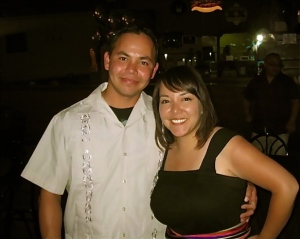This weekend I was at the Rose Bowl for a 5-mile run. My group meets there once a week as we train for a half-marathon. It is both exciting and daunting, having never run more than 4 miles at one time.
Earlier that week I had been thinking about when I used to run regularly — not since 2007, when I first moved to LA following a summer of regular running with Manito D by the river in ‘burque. It was during that time, when I was first getting to know LA, that I started this blog.
So there we were, all of us in our team running shirts, warming up together. We mostly just meet together to stretch, learn about nutrition and injury prevention, or hear announcements and the like. But once we get started, we are each on our own. And I am a slow poke among the runners, barely jogging faster than the walkers, so it only makes sense that we each go at our own pace. I blame my short legs.
As our coach was talking about proper form, I couldn’t help but look over her shoulder at the joggers and walkers who were already out on the path.
And there she was…the dancing treadmill woman!!
I’d seen her almost 5 years ago at the gym and wrote about her on this blog. She was amazing. She’d set the treadmill to a slow pace and instead of running, she danced. I remember looking to the others on the treadmills next to me and noticing all of us smiling while watcher her dance to the music in her ears.
Dancing woman was going slowly up the hill along the path, swaying to the right and to the left, moving along with the rhythms that played through her ear buds. Arms outstretched. A little hip hop, a little salsa. Every now and then, she’d stop and move her hips. She was really into it. Dancing, as they say, like no one was watching. Joggers and walkers kept passing her with smiles on their faces. I looked to the others in our circle, but no one noticed…or if they did, they didn’t show it.
So much has happened in the 5 years since I last saw her. I did a ton of research, wrote lots and lots of pages, weathered some academic storms, finished a degree, started a career, went through heartache, found love, made new friendships and cherished old ones. I have grown as a teacher, a scholar and as a person. The last few weeks I’ve been contemplating my future, feeling the strain of a tight job market, hoping for a gig that will be nurturing and enable me to reach my personal and professional goals…goals I have articulated and re-articulated over and over, even now.
At that moment when I saw the dancing woman again, I knew I was doing what I need to be doing. I hope I see her again sometime soon. Perhaps on another path, when I need reminding that I’m right where I need to be, dancing to the rhythm of the music in my ears.




